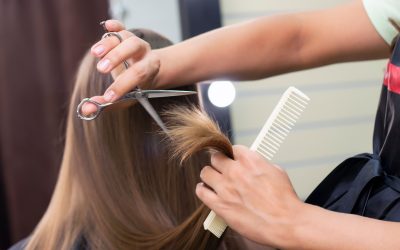The FDA has recently changed the guidelines for sun protection product manufacturers to make the labeling more accurately represent the protection the products offered, and to prevent consumers from being confused or mislead by false claims. The changes are as follows:
- Only sunscreen products with broad spectrum protection and an SPF of 15 or higher can claim to help prevent skin cancer. Products that don’t meet these specifications must include a warning statement on the label stating that the product does not claim to prevent premature skin aging or skin cancer.
- The term water proof is no longer allowed to appear on labels, as no sunscreen can be 100% water proof. Only the term water resistant can be used, and even that claim must be supported by research.
- You will no longer see any sun protection products labeled as sun block, as even products with an SPF of 50 or higher still allow some rays to penetrate to the skin.
In addition to choosing the appropriate sunscreen, consumers must also use the products correctly. The American Board of Family Medicine recommends the following precautions when exposing your skin to the sun.
Using Sunscreen Effectively
- Sunscreen diminishes the sun’s effects, but doesn’t prevent overexposure altogether. Don’t assume that because you use sunscreen that you can stay out in the sun for hours with no skin damage.
- Once the skin feels hot to the touch and starts to look red, it’s best to get into the shade rather than just applying more sunscreen.
- Protective clothing is recommended in addition to sunscreen, especially for longer exposure.
The suns UV rays can be dangerous—but that doesn’t mean you should avoid exposure altogether. Sunlight helps the body synthesize vitamin D, and some sun exposure each week is actually recommended for optimal health. It is best to avoid sunburn under any circumstances, as it increases the risk of melanoma.
Recent research conducted at the Mayo Clinic showed a six fold increase in incidents of malignant melanoma in the last 40 years. Several studies suggest a strong correlation between repeated sunburns early in life and malignant melanoma.
The sun exposure individuals receive before the age of 20 is most instrumental in causing melanoma later in life. Those who grew up in a low exposure region show significantly lower risk for developing melanoma, even if they increase exposure during adulthood.
The following factors may increase the likelihood of developing malignant melanoma according to the National Cancer Institute:
Factors related to exposure:
- The use of indoor tanning beds
- Regular exposure to strong sunlight
- Fair skinned individuals with blue or green eyes
- Individuals with blonde or red hair
- Those living in sunny climates or at a high altitude
- Experienced blistering sunburns early in life
Factors unrelated to exposure:
- History of melanoma in the family
- Exposure to certain chemicals such as creosote, coal tar or arsenic
- Weakened immune function
- Certain types of birth marks or moles

